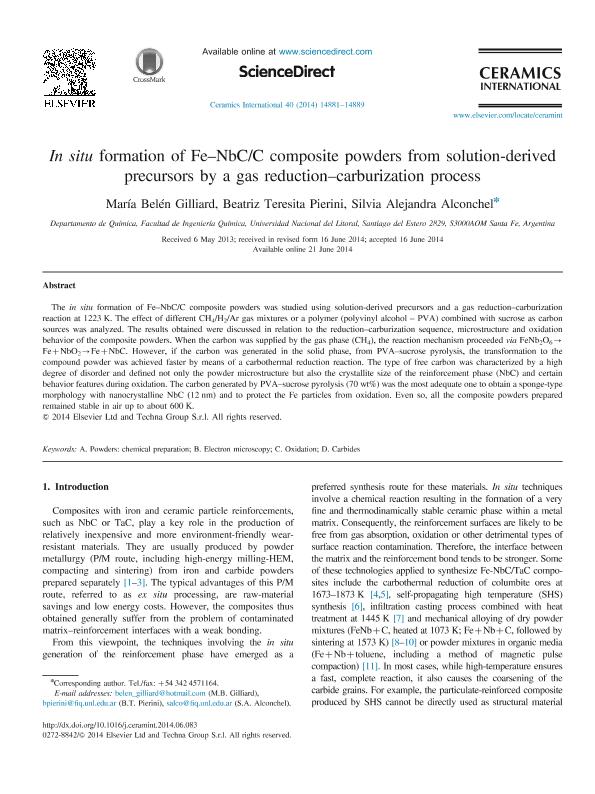Artículo
In situ formation of Fe–NbC/C composite powders from solution-derived precursors by a gas reduction–carburization process
Fecha de publicación:
06/2014
Editorial:
Elsevier
Revista:
Ceramics International
ISSN:
0272-8842
Idioma:
Inglés
Tipo de recurso:
Artículo publicado
Clasificación temática:
Resumen
The in situ formation of Fe–NbC/C composite powders was studied using solution-derived precursors and a gas reduction–carburization reaction at 1223 K. The effect of different CH4/H2/Ar gas mixtures or a polymer (polyvinyl alcohol – PVA) combined with sucrose as carbon sources was analyzed. The results obtained were discussed in relation to the reduction–carburization sequence, microstructure and oxidation behavior of the composite powders. When the carbon was supplied by the gas phase (CH4), the reaction mechanism proceeded via FeNb2O6→Fe+NbO2→Fe+NbC. However, if the carbon was generated in the solid phase, from PVA–sucrose pyrolysis, the transformation to the compound powder was achieved faster by means of a carbothermal reduction reaction. The type of free carbon was characterized by a high degree of disorder and defined not only the powder microstructure but also the crystallite size of the reinforcement phase (NbC) and certain behavior features during oxidation. The carbon generated by PVA–sucrose pyrolysis (70 wt%) was the most adequate one to obtain a sponge-type morphology with nanocrystalline NbC (12 nm) and to protect the Fe particles from oxidation. Even so, all the composite powders prepared remained stable in air up to about 600 K.
Palabras clave:
Powders: Chemical Preparation
,
Electron Microscopy
,
Oxidation
,
Carbides
Archivos asociados
Licencia
Identificadores
Colecciones
Articulos(INCAPE)
Articulos de INST.DE INVEST.EN CATALISIS Y PETROQUIMICA "ING. JOSE MIGUEL PARERA"
Articulos de INST.DE INVEST.EN CATALISIS Y PETROQUIMICA "ING. JOSE MIGUEL PARERA"
Citación
Alconchel, Silvia Alejandra; Pierini, Beatriz Teresita; Gilliard, María Belén; In situ formation of Fe–NbC/C composite powders from solution-derived precursors by a gas reduction–carburization process; Elsevier; Ceramics International; 40; 9, Parte B; 6-2014; 14881-14889
Compartir
Altmétricas




